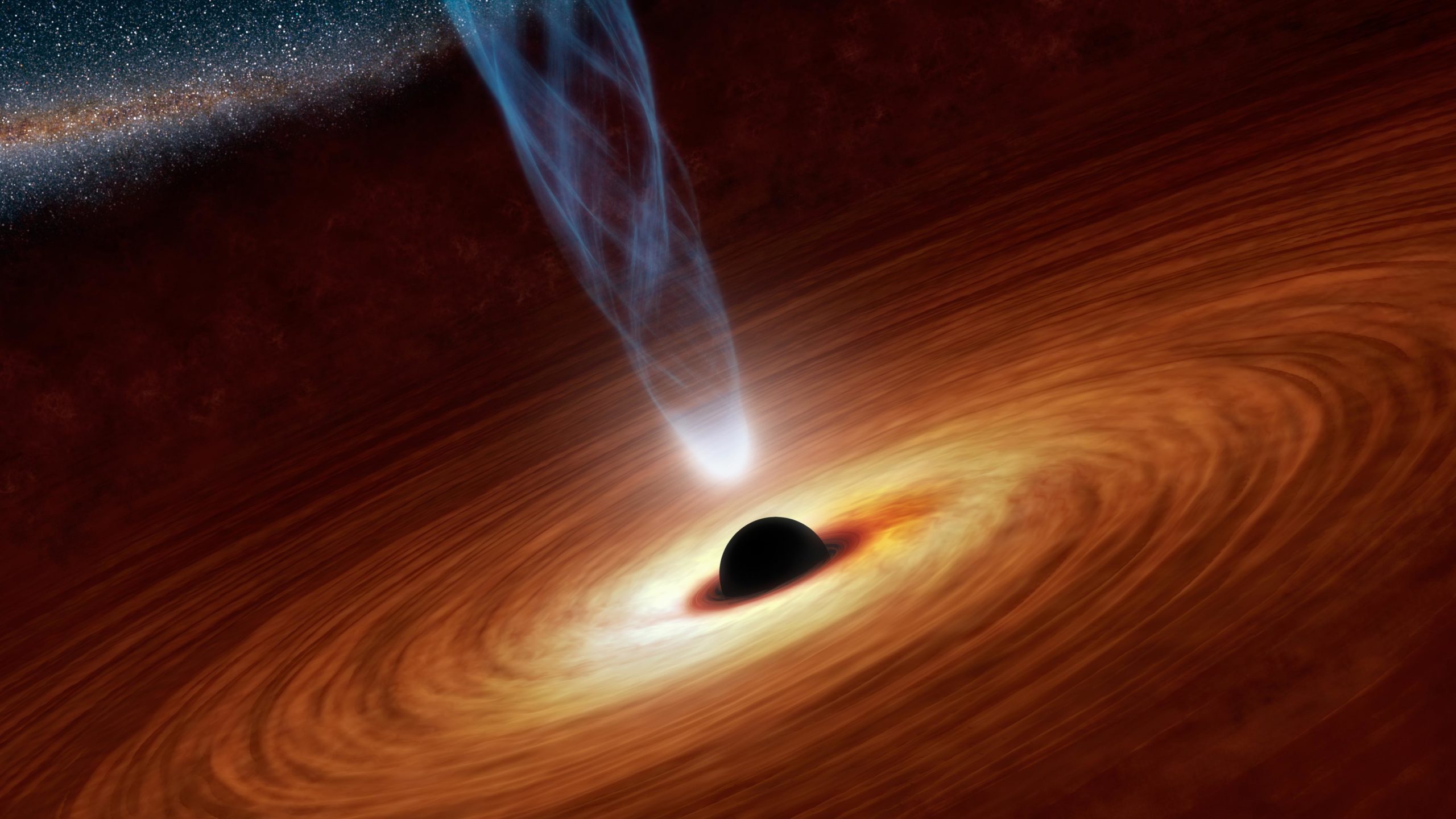
Gravitational waves confirm a black hole law predicted by Stephen Hawking
Despite their mysterious nature, black holes obey certain simple rules. Today, one of the most famous black hole laws predicted by physicist Stephen Hawking has been confirmed by gravitational waves.
According to the black hole theorem developed by Dr. Hawking in the early 1970s, the surface area of black holes does not decrease over time. The field theorem fascinates physicists because it reflects the well-known laws of physics that disorder or entropy cannot diminish over time. Instead, entropy is constantly increasing
“It’s an exciting sign that the black hole area is something basic and important,” said Wil Farr, an astrophysicist at Stony Brook University and the Flatiron Institute.
The surface of a lone black hole does not change. After all, nothing can escape from within. However, dropping something into a black hole will increase its mass and surface area. However, incident objects can also rotate the black hole and reduce its surface area. According to the law of area, the increase in surface area due to the increase in mass always outweighs the decrease in surface area due to the increase in spin. To test this rule of thumb, researchers like MIT astrophysicists Maximiliano Isi and Farr used space-time waves that passed through two black holes. The waves spiraled inward and merged into a large black hole. The surface of a black hole is defined by the event horizon (the boundary at which it cannot escape). According to the area theorem, the event horizon area of the newly formed black hole must be at least as large as the event horizon area of the two original black holes combined.
The team analyzed the first gravitational wave data detected by LIGO’s Advanced Laser Interferometer Gravitational-Wave Observatory in 2015. The researchers divided the gravitational wave data into two periods before and after coalescence and calculated the black hole surface for each period. The surface area of the newly formed black hole was larger than the combined surface area of the first two black holes, and the team maintained the area law with a 95% confidence level, as reported by the team in Physical Review Letters I’m reporting in a newspaper.
“It’s the first time we’ve been able to quantify it,” says Isi.
The area theorem is the result of the general theory of relativity that explains the physics of black holes and gravitational waves. Previous analysis of gravitational waves has been consistent with the predictions of the general theory of relativity and has already shown that the area law is not completely wrong. But this new study is a “clearer confirmation” of the field’s rule, says Cecilia Kirenti, a physicist at the University of Maryland at College Park.
So far, the general theory of relativity explains black holes well. But what happens when scientists find general relativity (usually applied to large objects like black holes) with quantum mechanics that explain small things like atoms and elementary particles, I don’t fully understand. Strange things can happen in this quantum realm.
For example, a black hole can emit a faint nebula of particles called Hawking radiation. This is another idea that Hawking developed in the 1970s. This effect can cause the black hole to shrink which violates area law, but for a long time only, it did not affect the relatively fast black hole coalescence seen by LIGO…
Physicists are looking for improved theories that combine the two disciplines to build new and improved theories of quantum gravity. If a black hole doesn’t follow the general theory of relativity, physicists can go in the right direction to find this new theory.
As a result, physicists tend to be unhappy with the continued success of general relativity, says Farr. “Oh, we were right again,”




